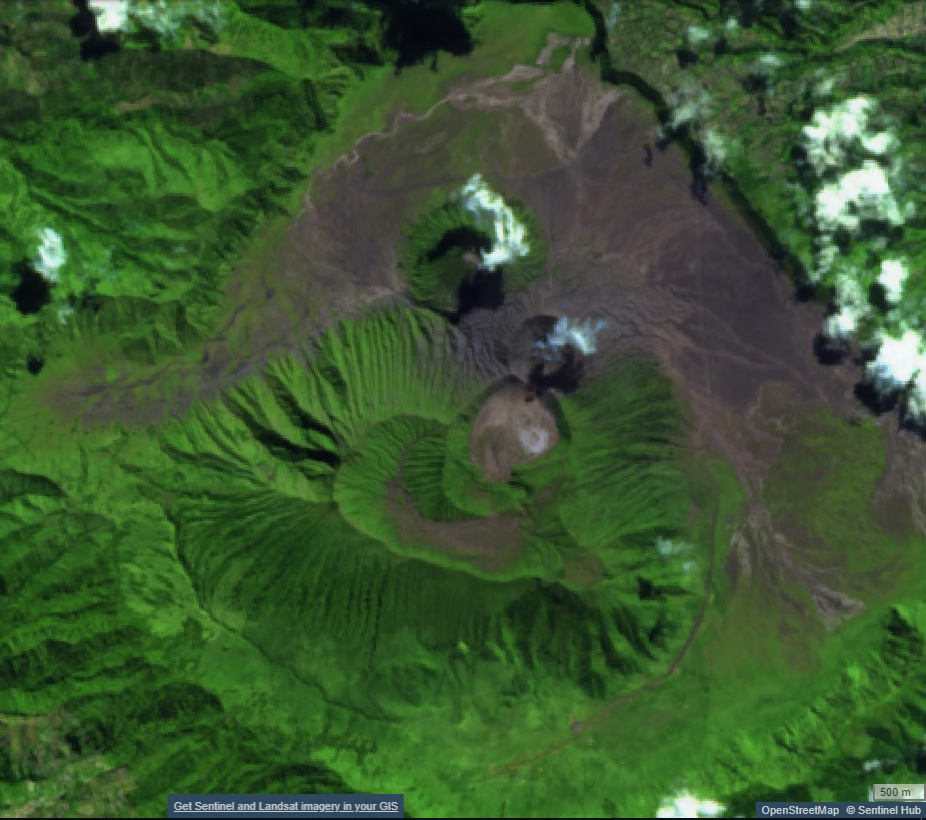Report on Tengger Caldera (Indonesia) — August 2019
Bulletin of the Global Volcanism Network, vol. 44, no. 8 (August 2019)
Managing Editor: Edward Venzke.
Research and preparation by Kadie Bennis.
Tengger Caldera (Indonesia) Ash emissions on 19 and 28 July 2019; lahar on the SW flank of Bromo
Please cite this report as:
Global Volcanism Program, 2019. Report on Tengger Caldera (Indonesia) (Venzke, E., ed.). Bulletin of the Global Volcanism Network, 44:8. Smithsonian Institution. https://doi.org/10.5479/si.GVP.BGVN201908-263310
Tengger Caldera
Indonesia
7.942°S, 112.95°E; summit elev. 2329 m
All times are local (unless otherwise noted)
The Mount Bromo pyroclastic cone within the Tengger Caldera erupts frequently, typically producing gas-and-steam plumes, ash plumes, and explosions (BGVN 44:05). Information compiled for the reporting period of May-July 2019 is from the Pusat Vulkanologi dan Mitigasi Bencana Geologi (PVMBG, also known as CVGHM) and the Darwin Volcanic Ash Advisory Centre (VAAC).
The eruptive activity at Tengger Caldera that began in mid-February continued through late July 2019, including white-and-brown ash plumes, ash emissions, and tremors. During the months of May through June 2019, white plumes rose between 50 to 600 m above the summit. Satellite imagery captured a small gas-and-steam plume from Bromo on 5 June (figure 18). Low-frequency tremors were recorded by a seismograph from May through July 2019.
According to PVMBG and a Volcano Observatory Notice for Aviation (VONA), an ash eruption occurred on 19 July 2019; however, no ash column was observed due to weather conditions. A seismograph recorded five earthquakes and three shallow volcanic tremors the same day. In addition, rainfall triggered a lahar on the SW flank of Bromo.
On 28 July the Darwin VAAC reported that ash plumes originating from Bromo rose to a maximum altitude of about 3.9 km and drifted NW from the summit, based on webcam images and pilot reports. PVMBG reported that lower altitude ash plumes (2.4 km) on the same day were also recorded by webcam images, satellite imagery (Himawari-8), and weather models.
Geological Summary. The 16-km-wide Tengger caldera is located at the northern end of a volcanic massif extending from Semeru volcano. The massive volcanic complex dates back to about 820,000 years ago and consists of five overlapping stratovolcanoes, each truncated by a caldera. Lava domes, pyroclastic cones, and a maar occupy the flanks of the massif. The Ngadisari caldera at the NE end of the complex formed about 150,000 years ago and is now drained through the Sapikerep valley. The most recent of the calderas is the 9 x 10 km wide Sandsea caldera at the SW end of the complex, which formed incrementally during the late Pleistocene and early Holocene. An overlapping cluster of post-caldera cones was constructed on the floor of the Sandsea caldera within the past several thousand years. The youngest of these is Bromo, one of Java's most active and most frequently visited volcanoes.
Information Contacts: Pusat Vulkanologi dan Mitigasi Bencana Geologi (PVMBG, also known as Indonesian Center for Volcanology and Geological Hazard Mitigation, CVGHM), Jalan Diponegoro 57, Bandung 40122, Indonesia (URL: http://www.vsi.esdm.go.id/); Darwin Volcanic Ash Advisory Centre (VAAC), Bureau of Meteorology, Northern Territory Regional Office, PO Box 40050, Casuarina, NT 0811, Australia (URL: http://www.bom.gov.au/info/vaac/).


